TERRA TRIBUTA

Menu
ABONNEZ-VOUS
A L'INFOLETTRE
A L'INFOLETTRE
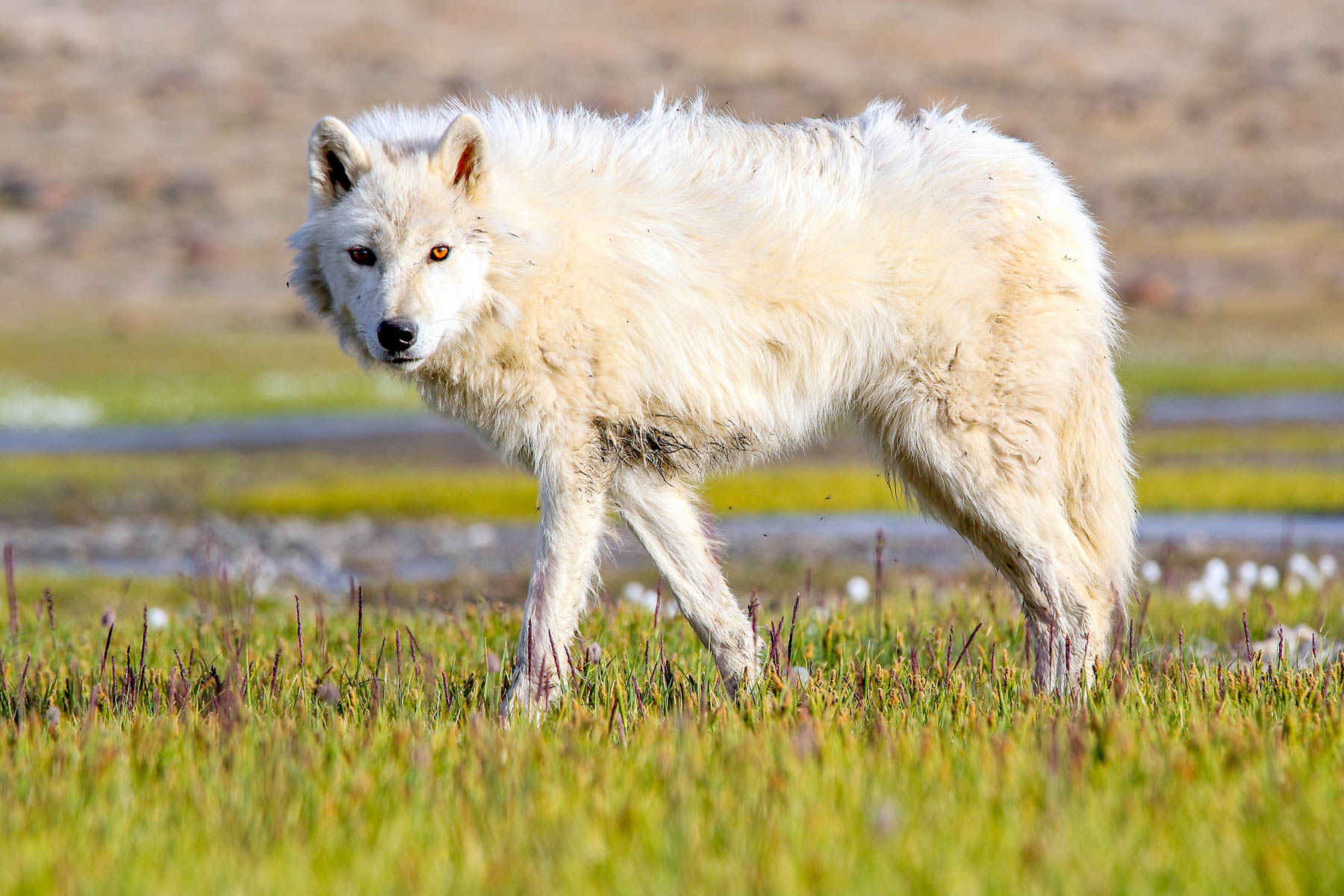
“A wolf!” exclaimed our Inuit guide Sammy Angnaluak. As I was setting up camp with my journalist friend Anne Pelouas, I quickly reached into my backpack and grabbed my camera. Fifty metres away, an Arctic wolf was watching us…
With curious eyes, this superb white animal seems intrigued by our little group of bipeds. I’m in awe of this encounter. We never felt any hostility at any time. In a few minutes, this wolf circles our camp, then we watch it move away towards a rocky ridge. “Look, there’s more!” says Adam, scanning the scene with his binoculars. We even discover four little cubs running between the paws of their fellow wolves. And while the neighbouring pack disappears behind the ridge, it’s high time to eat, because twenty kilometres on foot with loaded backpacks, that’s tiring!
The midnight sun slowly moves on, illuminating the rocky plateau surrounded by mountains. By evening, the team is fast asleep. Despite my fatigue, I stand at the entrance of our tent and wait with my camera. Because I’m sure our neighbours will be here tonight – or so I hope!
But nothing happens…
Nothing yet.
Nothing yet.
The idea of another wolf encounter keeps me awake…
Until fatigue takes me elsewhere!
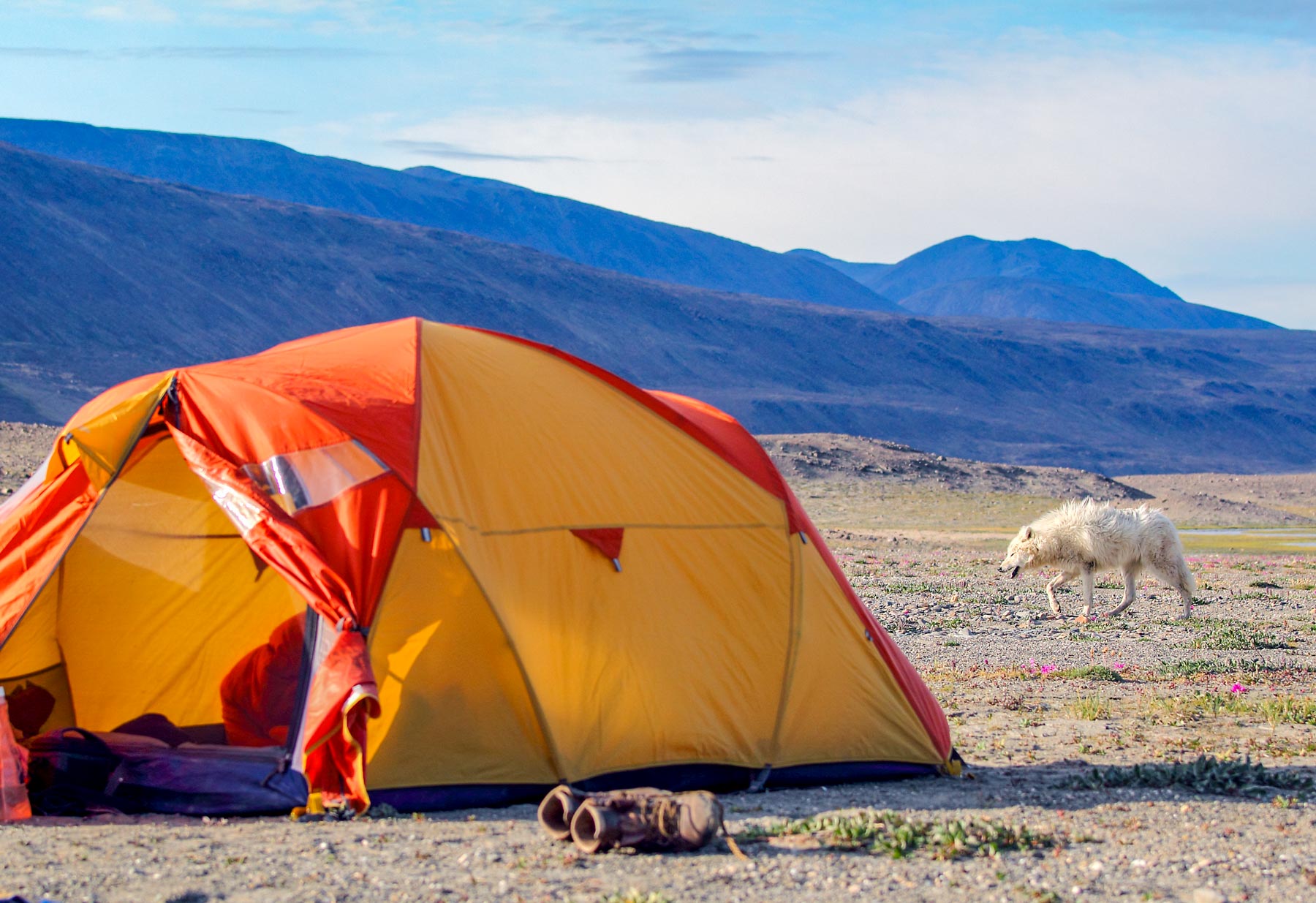
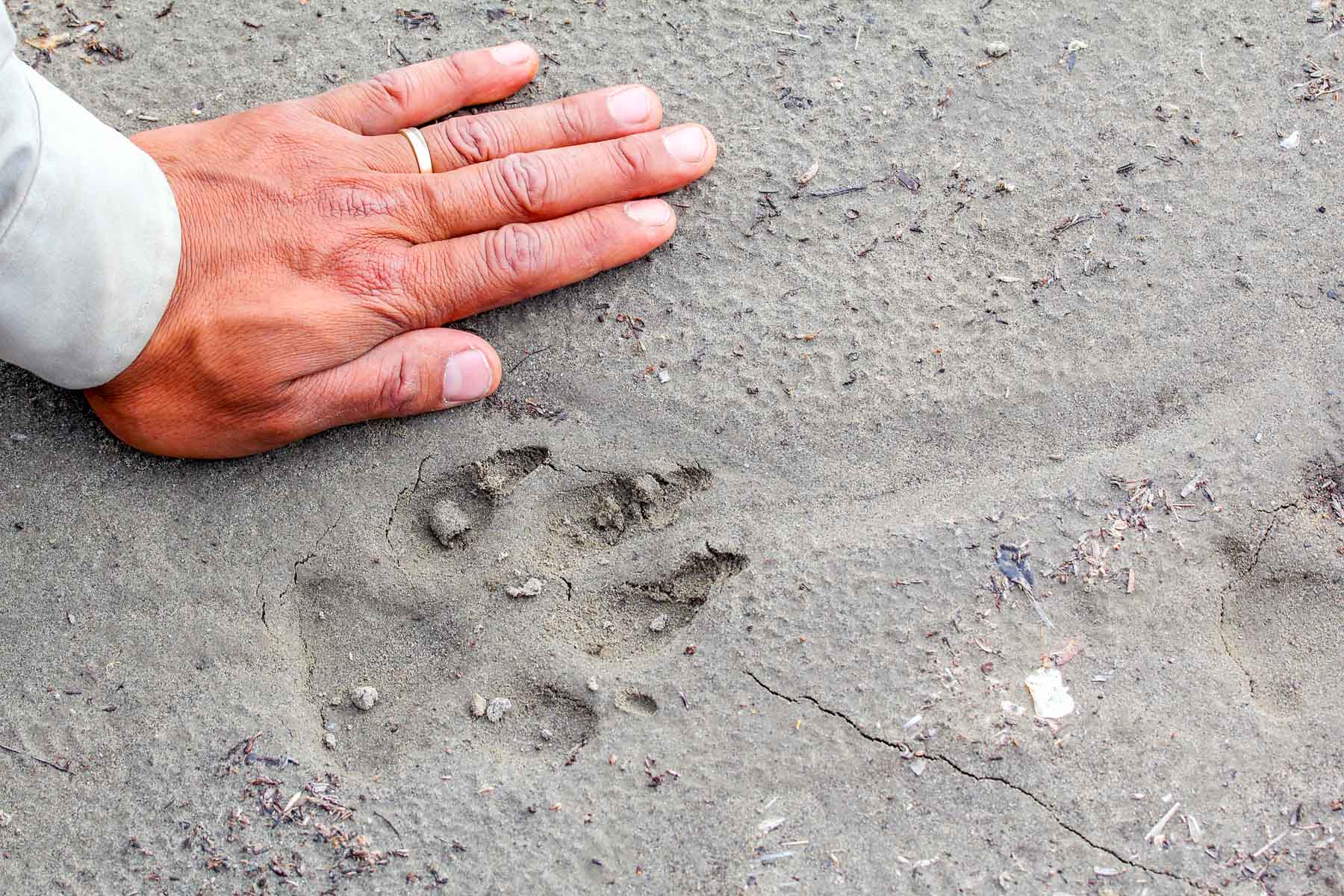
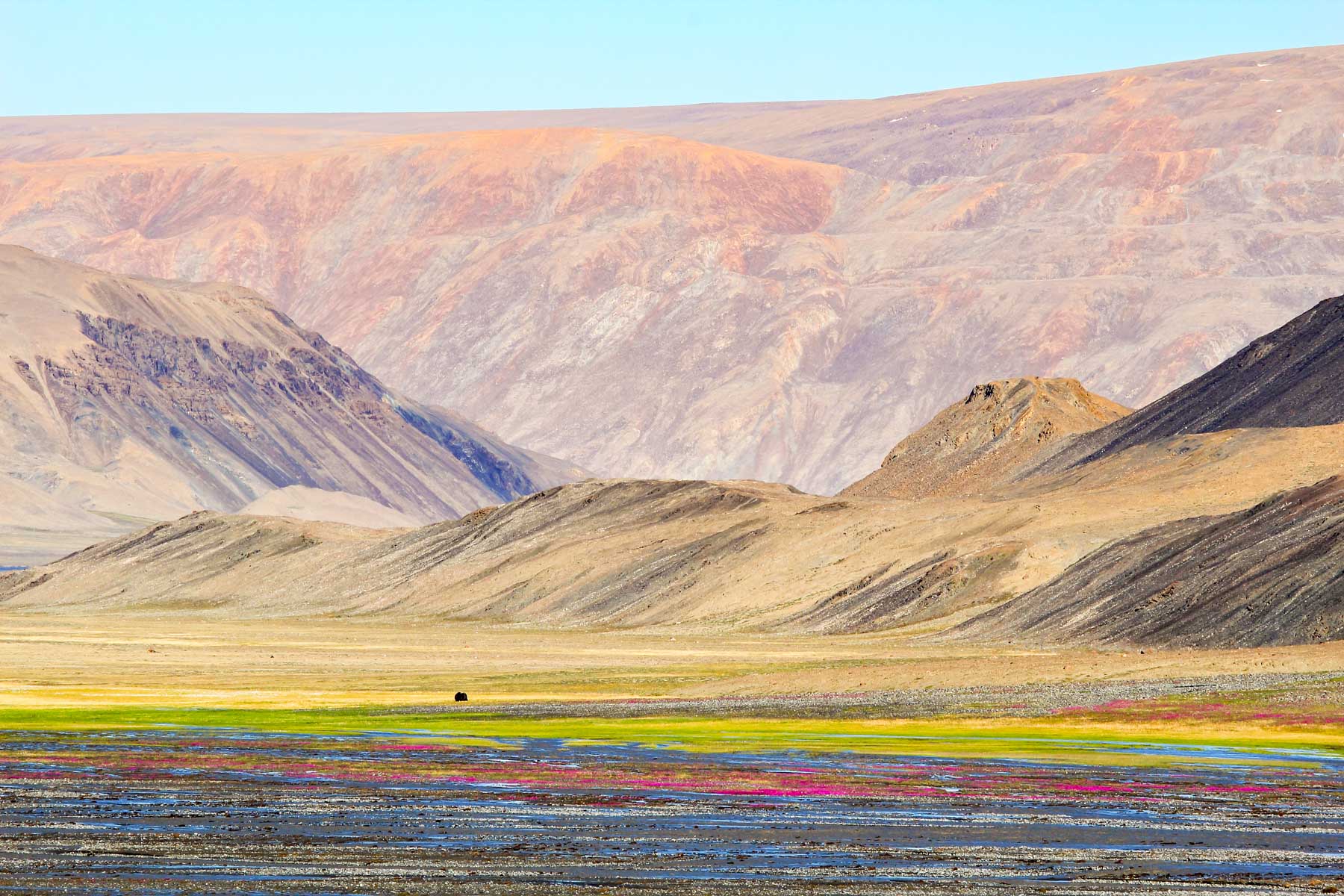
Predators mean prey! In Quttinirpaaq National Park, a lone wolf hunts mainly Arctic hares and lemmings. A pack, on the other hand, will prey on larger animals such as caribou and muskox. In fact, from our very first kilometres on foot, Anne and I understood that every day here is a struggle for survival. During our 120 km expedition, we came across bones, antlers and even musk-ox skulls.
Of course, we did catch glimpses of stocky silhouettes in the distance. One late day, I also encountered a lone muskox on a rocky ridge. And the following day, our group was skirting a river when an adult male forced us to cross the torrent. Sammy explains that musk oxen can charge when they feel threatened. A final detail: Quttinirpaaq National Park is also home to polar bears!
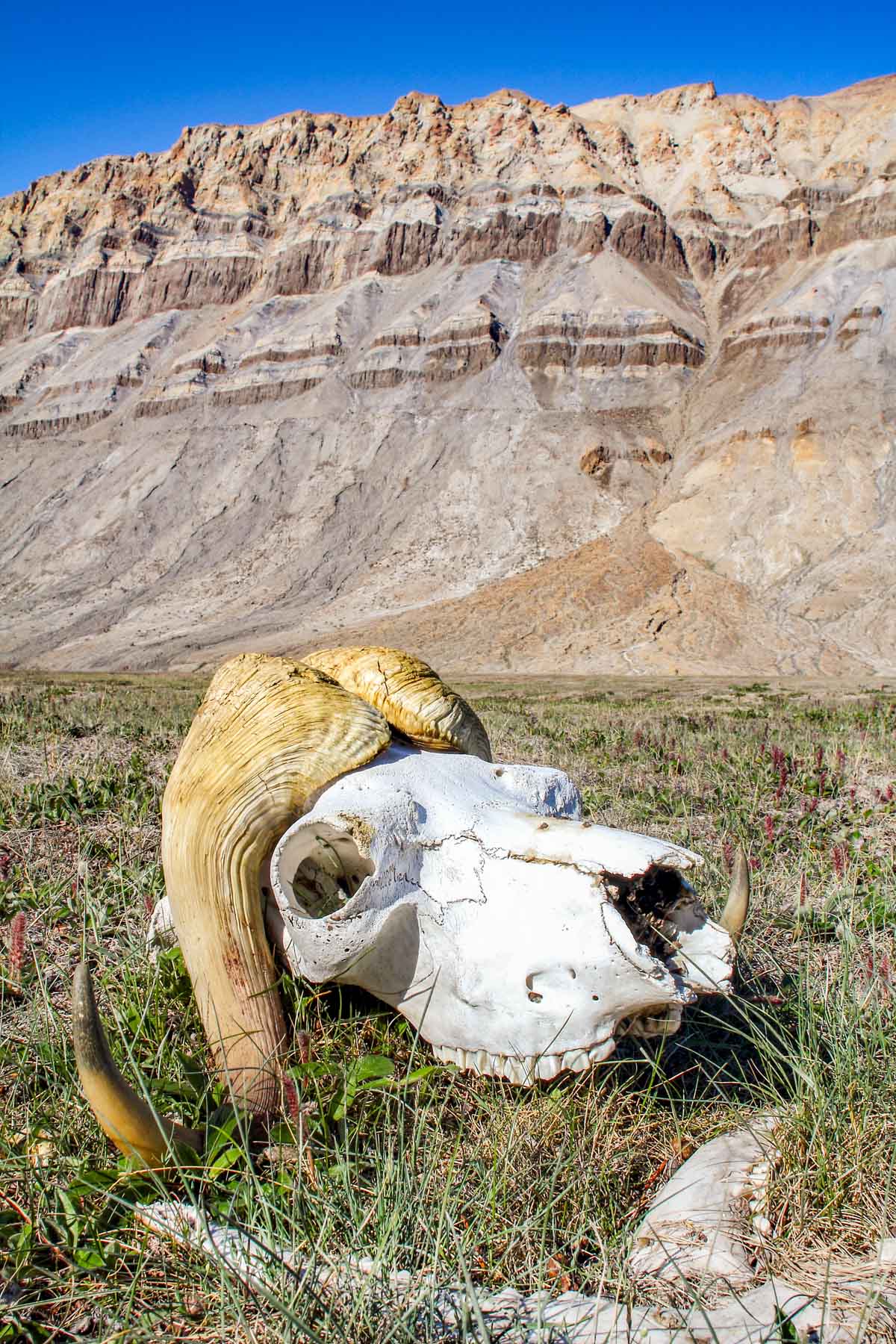
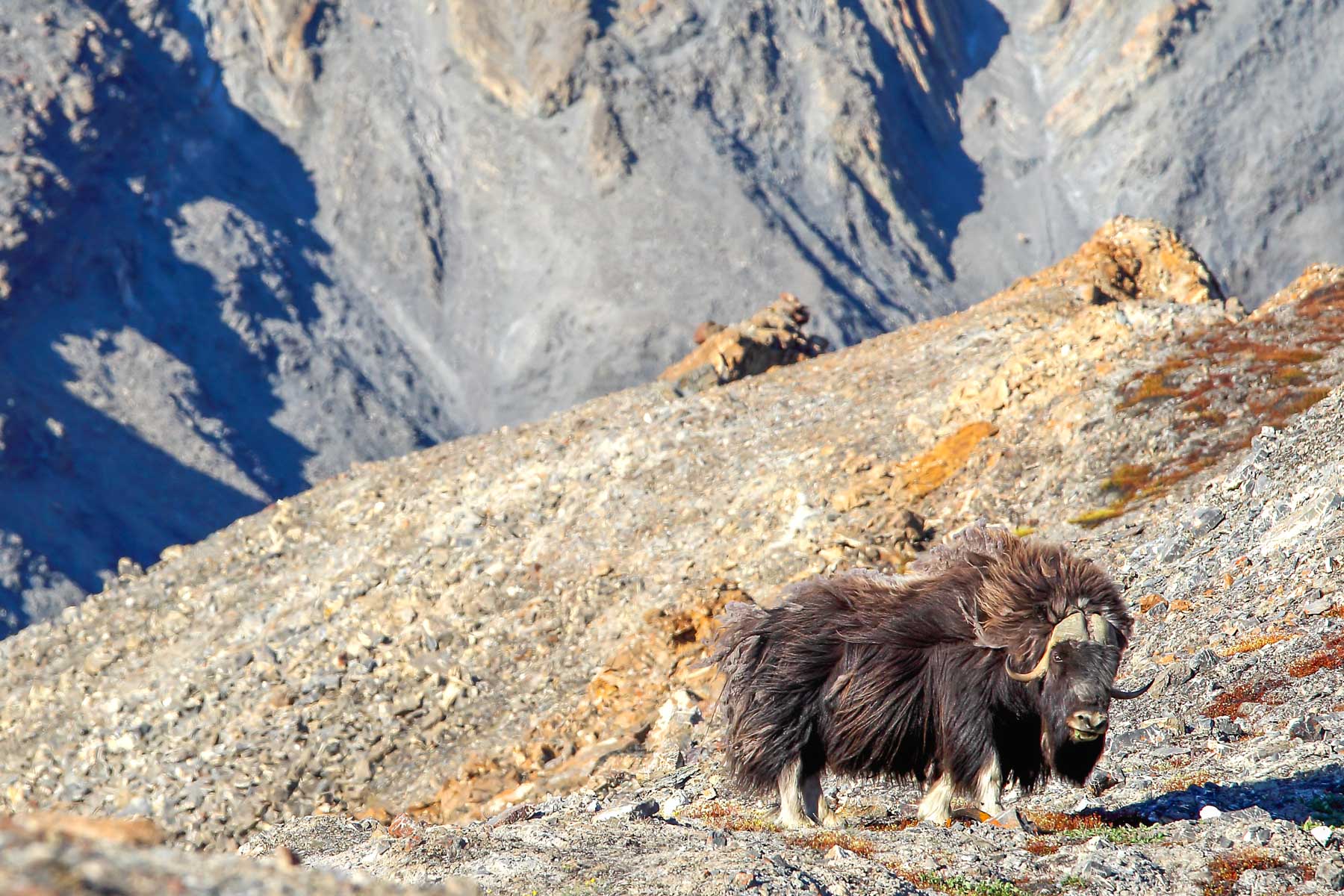
This function has been disabled for .